Anto Bezingar, seminarian from India: “My country needs more priests”
He belongs to the diocese of Neyyattinkara (Kerala State, India) and comes from a devout Catholic family of two brothers
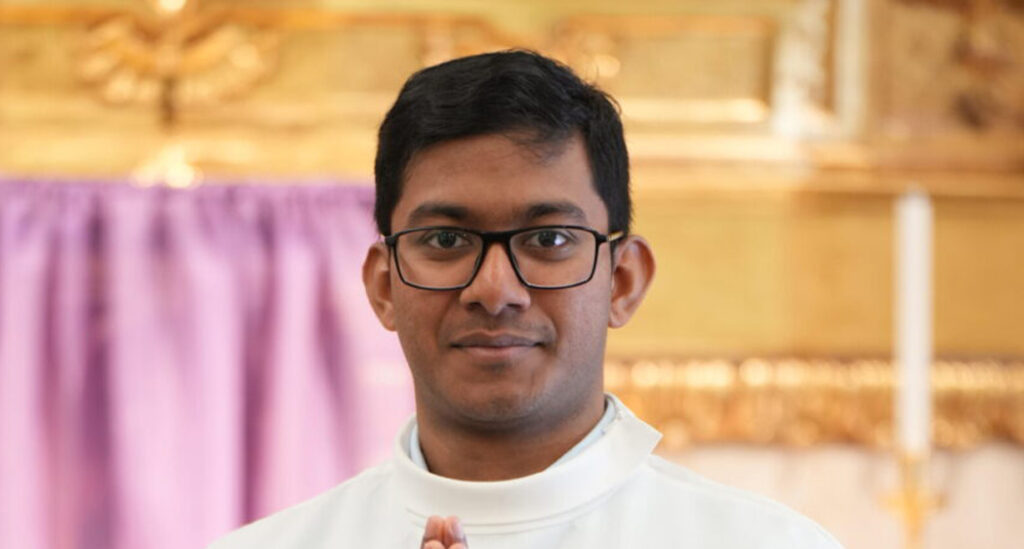
Anto Benzigar, a seminarian from India, entered the seminary at the age of 17. Now, at 26 (in 2025), he is studying the fourth year of Theology at the Ecclesiastical Faculties of the University of Navarra and resides at the Bidasoa International Seminary in Pamplona.
He discovered the love of God as a child, thanks to the Christian formation of his parents
Anto discovered the love of God as a child: From a very early age I received the spiritual nourishment I needed from my family, catechism, and training at the Little Way Association. Through my parents’ life of prayer, and their total trust in Christ and devotion to the Blessed Virgin Mary, I came to realize the love of God, my almighty Father.
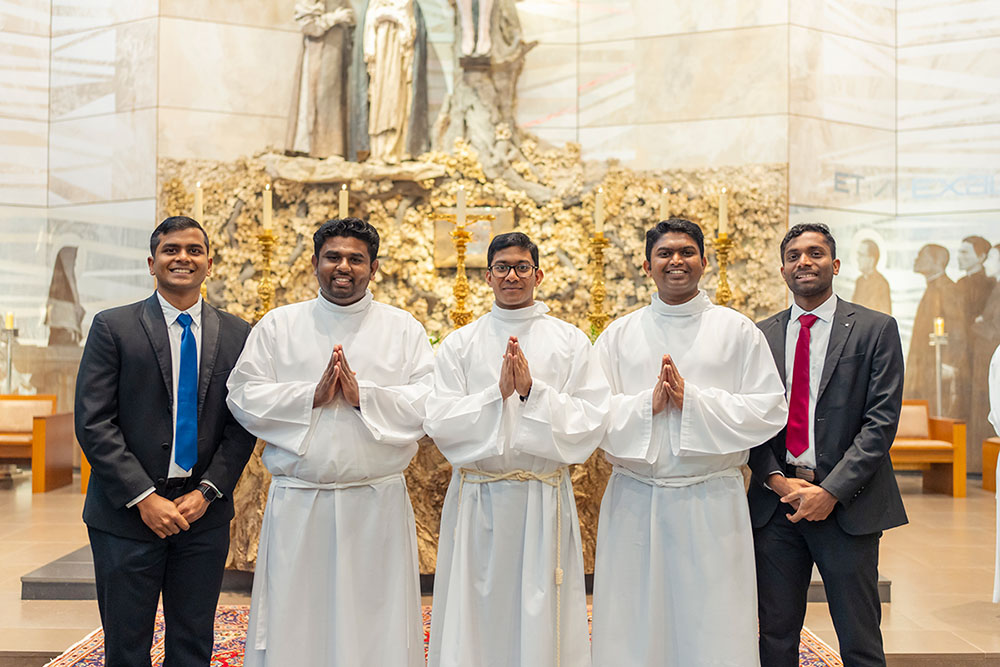
Anto (center of the image), with other seminarians from India
Because for him, the formation received at home, in the family, is a treasure that we must all thank our parents for. A Christian formation that remains imbued in our soul
A faith passed down from generation to generation
“Keralite families (southern India), like mine, often have a deeply rooted Catholic faith that is passed down from generation to generation. This determination in family prayer and spiritual practices can be a valuable lesson for European families seeking to strengthen their faith,” notes this young Indian seminarian.
During his childhood, serving as an altar boy aroused in him a burning desire to become a Catholic priest. And after finishing his secondary school studies, he entered the seminary on May 31, 2015. He remembers the exact date with great joy and hope.
The origin of Christianity in his diocese in India
The origin of Christianity in his diocese (Neyyattinkara) dates back to the year 1600, when a group of Catholics baptized by St. Francis Xavier, settled in some localities in the area such as Neyyattinkara, Vlathankara, Amaravila and Parassala.
In 1707, the Jesuit missionary Fr. Severia Borgis started the Nemom Mission. The first converts came from the Nair community and the first church of this diocese was erected in 1775 in Amaravila.
11% Catholics
But the spread of the Catholic faith increased in his diocese at the beginning of the 20th century with the missionary activity of the saintly archbishop Aloysius Maria Benziger (OCD).
“His holy life, powerful leadership, missionary zeal and generous assistance to missionary priests paved the way for the formation of several ecclesial communities and the erection of many churches,” says Anto.
Finally, on June 14, 1996, St. John Paul II, through the bull Ad Aptius Provehendum, erected the Latin Diocese of Neyyattinkara.
Today, the total population of this diocese is 1,467,000 inhabitants, of which 160,795 are Catholic faithful, or 11%.
The shortage of priests: a great challenge
“With a relatively small Catholic population compared to the total population, there is a potential need for evangelization and reaching out to more people,” says Anto, who says that the need for vocations and the shortage of priests in his diocese is a great challenge.
Paradoxically, this part of India has many parishes and missionary centres, and it is a great responsibility of the diocese to provide pastoral and appropriate care for its faithful, because, in addition, the people of India respect the Catholic priest and hold him in high esteem.
What can we Europeans learn from India?
This shortage of priests does not prevent parish life in Kerala from being very active, with vibrant communities that foster a sense of belonging and participation in the Church.
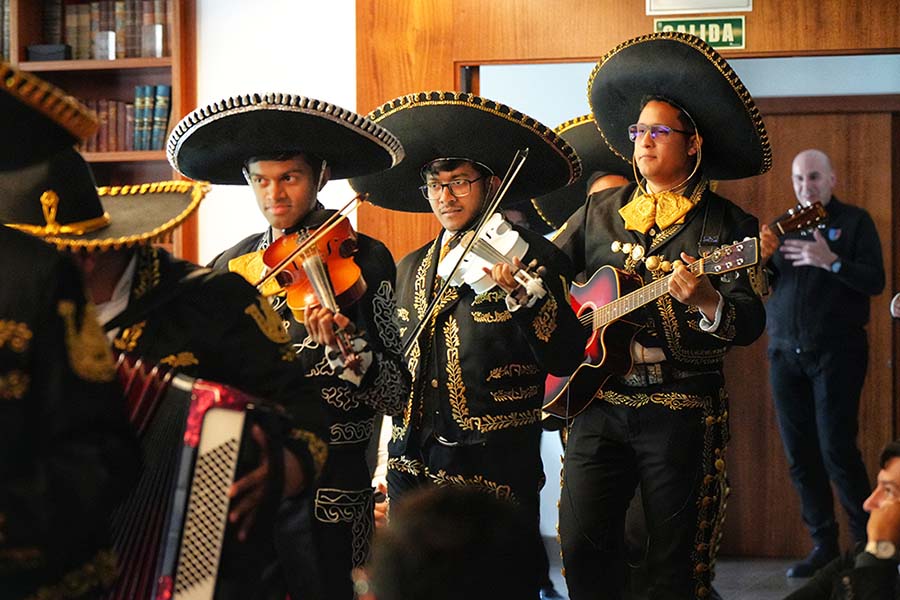
Anto’s classmates dressed as mariachis playing at an end-of-year festival in Bidasoa
“This is something that can inspire European parishes: creating more attractive and inclusive environments for young people,” says this young seminarian.
Cultural and religious diversity in India
Another of the riches of Kerala, the province of Anto Benzigar, is the rich cultural heritage that combines Hindu, Christian and Muslim traditions. For him, this cultural diversity creates a unique and vibrant society where people of different origins can live and work together.
“I think this trait can inspire Europeans to embrace cultural diversity and learn from different traditions,” she says.
One thing Europeans can also learn from their country is how to overcome obstacles: “Kerala has faced numerous challenges, including natural disasters and socio-economic problems. However, the Keralite people have shown remarkable resilience and a strong sense of community in overcoming these adversities. This spirit of perseverance can be an inspiration to Europeans as they face their own difficulties.”
The richness of living in Bidasoa
But Anto Benzigar is also acquiring great knowledge of Spain. In addition to the language that gives him an international perspective, the cultural heritage of our country and its different ways of thinking.
Of course, as he assures, the historical and artistic wealth of Spain is giving him a deeper insight into the country’s past.
But the most important thing is the international perspective that living in the Bidasoa International Seminary gives him: “Meeting people from diverse origins and cultures fosters understanding, tolerance and a broader world view,” he says with satisfaction.
To this he adds the extensive theological, spiritual, human and community training, because, for him, living in a seminary fosters a sense of community and shared values.
“I am learning to live closer to others, cultivate relationships and support each other on this spiritual journey. On the other hand, the pastoral experience I am gaining, such as volunteering in local parishes or working with marginalized communities, is of great value in serving others. All of this contributes to deeper personal growth, managing my time, developing self-discipline and cultivating inner peace,” he concludes.
The seven characteristics of a 21st century priest
Faced with the great challenge he will face when he returns to his country, this young seminarian from India dares to launch seven characteristics that a 21st century priest must have whose purpose is to live with the people he serves.
1. Authentic and accessible
- Today’s youth value authenticity. A young priest must be genuine and relatable, presenting himself as a real person with life experiences and struggles.
- Being accessible is key. A young priest must create an open and welcoming atmosphere where people feel comfortable sharing their thoughts and concerns.
2. Tech-savvy and communicative
- In today’s digital age, a young priest should feel comfortable using technology to connect with people. This could involve social media, online platforms, and digital communication tools.
- Strong communication skills are essential for preaching, teaching, and counseling. A young priest should be able to articulate his faith in a clear and engaging way.
3. Compassionate and inclusive
- A young priest should be compassionate and understanding, showing empathy toward people from all walks of life.
- He should be inclusive and welcoming to everyone, regardless of background, sexual orientation, or beliefs.
4. Passionate and mission-driven
- A young priest should be passionate about his faith and motivated to serve others. He should have a clear sense of purpose and a desire to make a difference in the world.
- He should be willing to go beyond the traditional roles of a priest, get involved in social justice issues, and stand up for the marginalized.
5. Open to learning and growth
- The world is constantly changing, and a young priest should be open to learning and growth. He should be willing to embrace new ideas and adapt to the changing needs of his community.
- He should seek opportunities for ongoing formation and professional development.
6. Collaborative and team-oriented
- Priests of this age should work as a team, in collaboration with other priests, religious leaders, and lay people.
- They should be willing to share their gifts and talents and to support the work of others.
7. Openness to scientific research
- A young priest should approach science with an open mind, recognizing its contributions to our understanding of the universe. Engaging in respectful dialogue with scientists can help bridge the gap between faith and science. This can lead to a deeper understanding of both perspectives.
- But above all this, a priest should strive to be very holy and to pray constantly.
Related
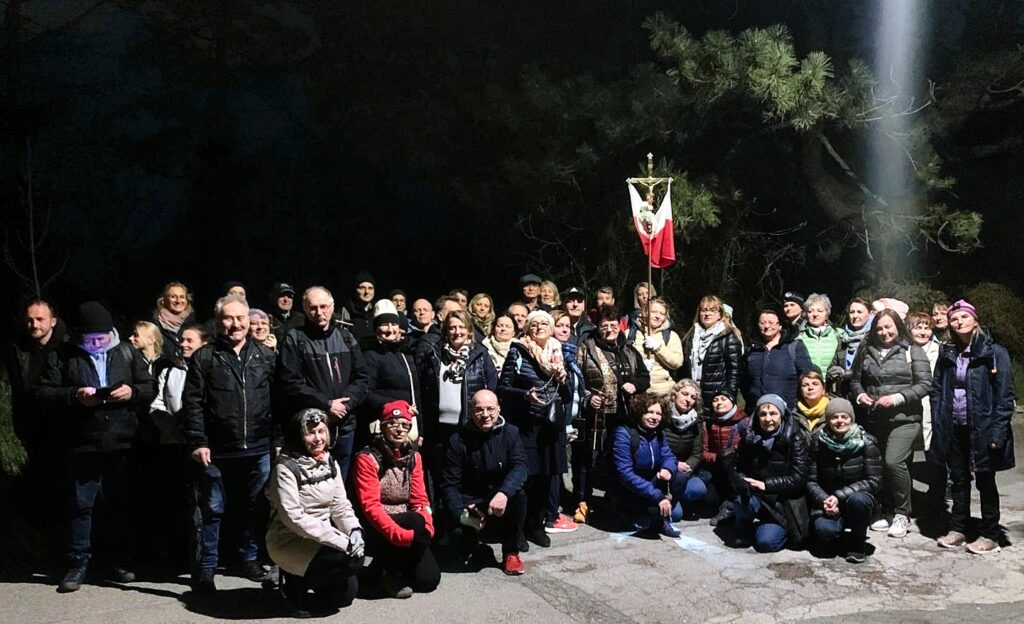
From Kahlenberg to the Papal Cross – Polish Night Way of the Cross in Vienna
Heschel Centre for Catholic-Jewish Relations at the Catholic University of Lublin
15 April, 2025
2 min
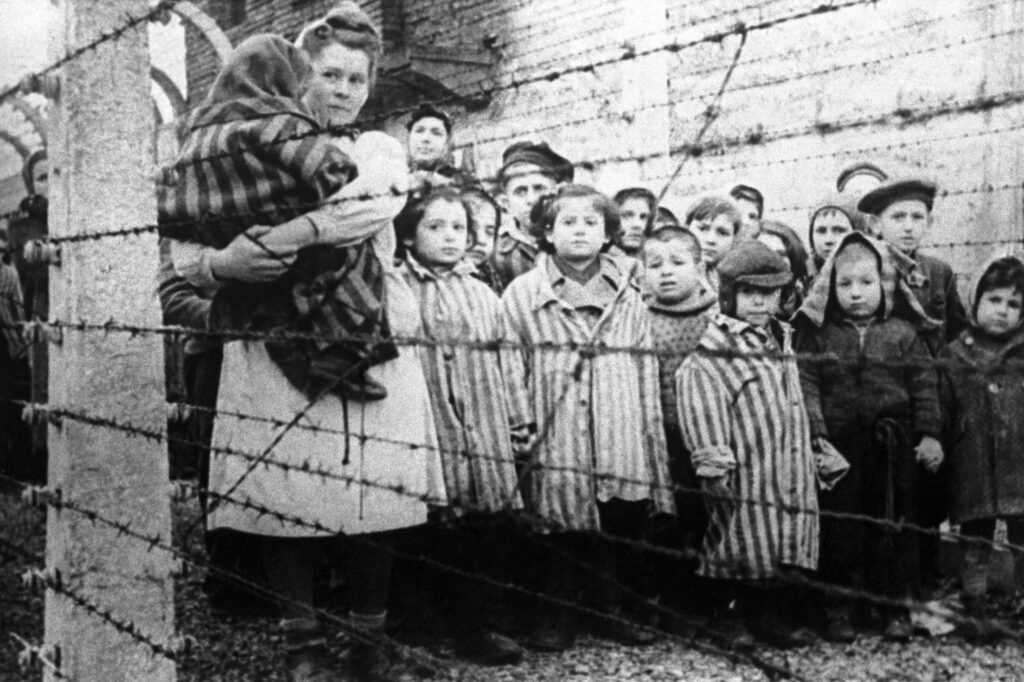
“I Will Never Be Herod for the Innocents”
Wlodzimierz Redzioch
14 April, 2025
6 min
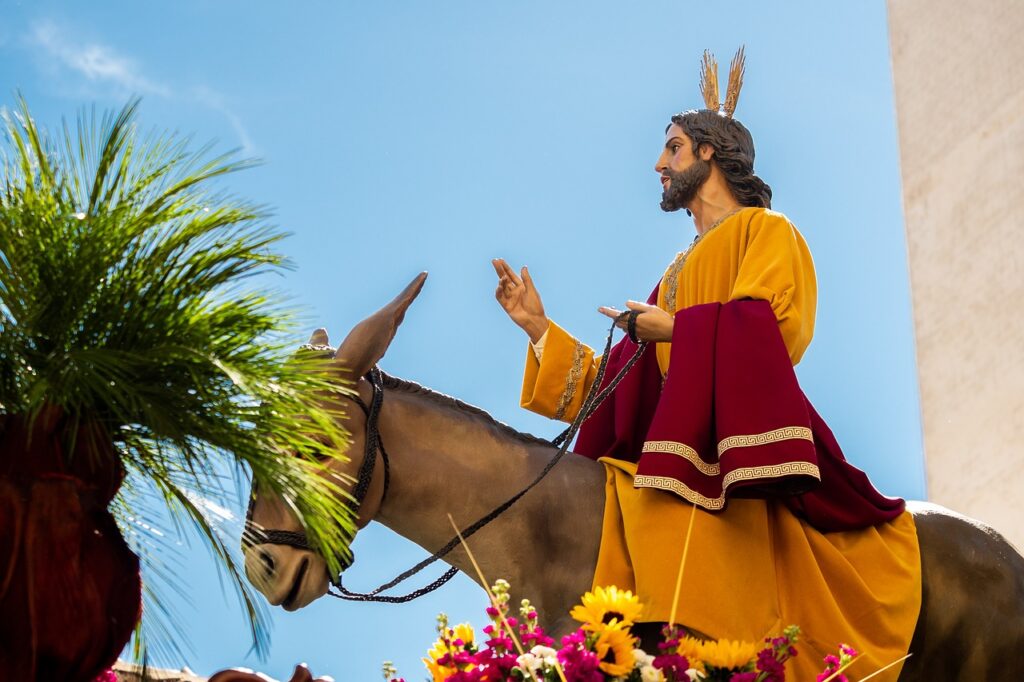
Reflection by Bishop Enrique Díaz: On a Donkey
Enrique Díaz
13 April, 2025
5 min
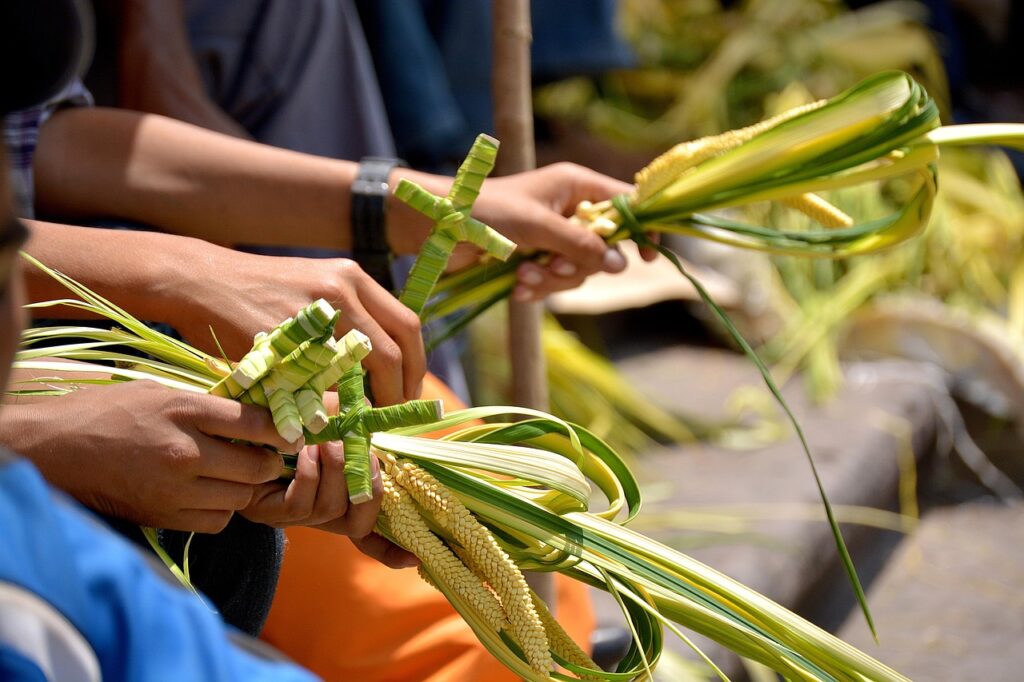
I have ardently desired to eat this Passover with you: Fr. Jorge Miró
Jorge Miró
12 April, 2025
2 min
 (EN)
(EN)
 (ES)
(ES)
 (IT)
(IT)

